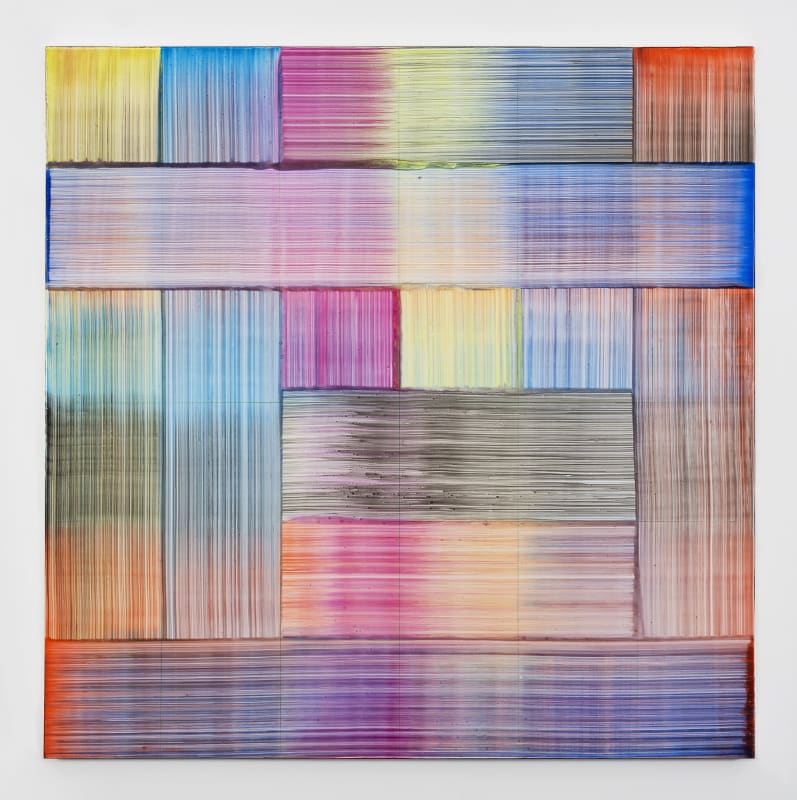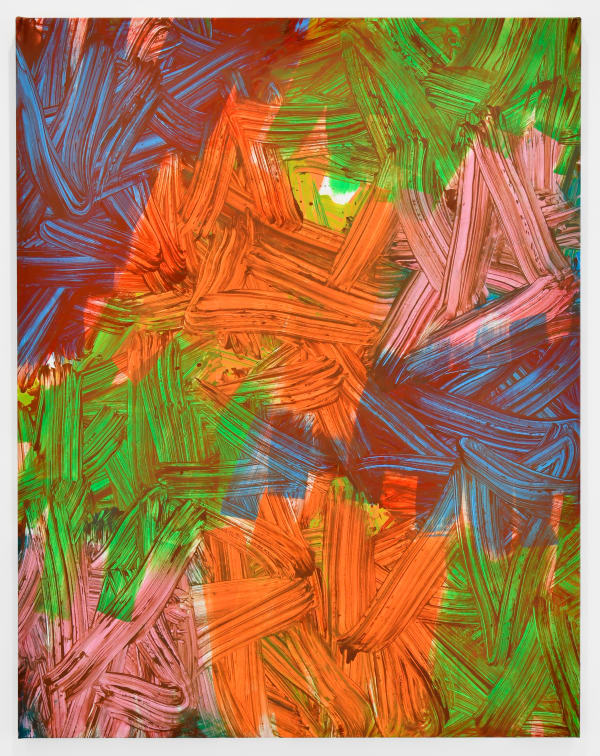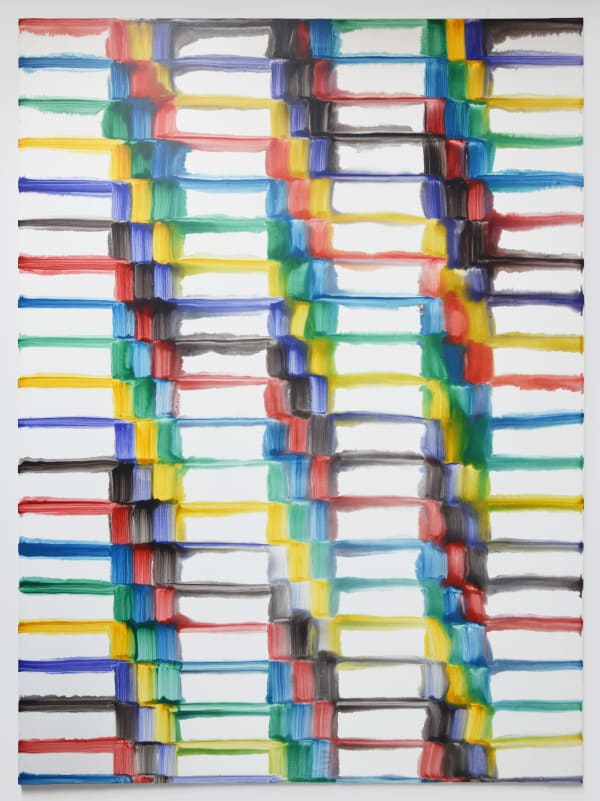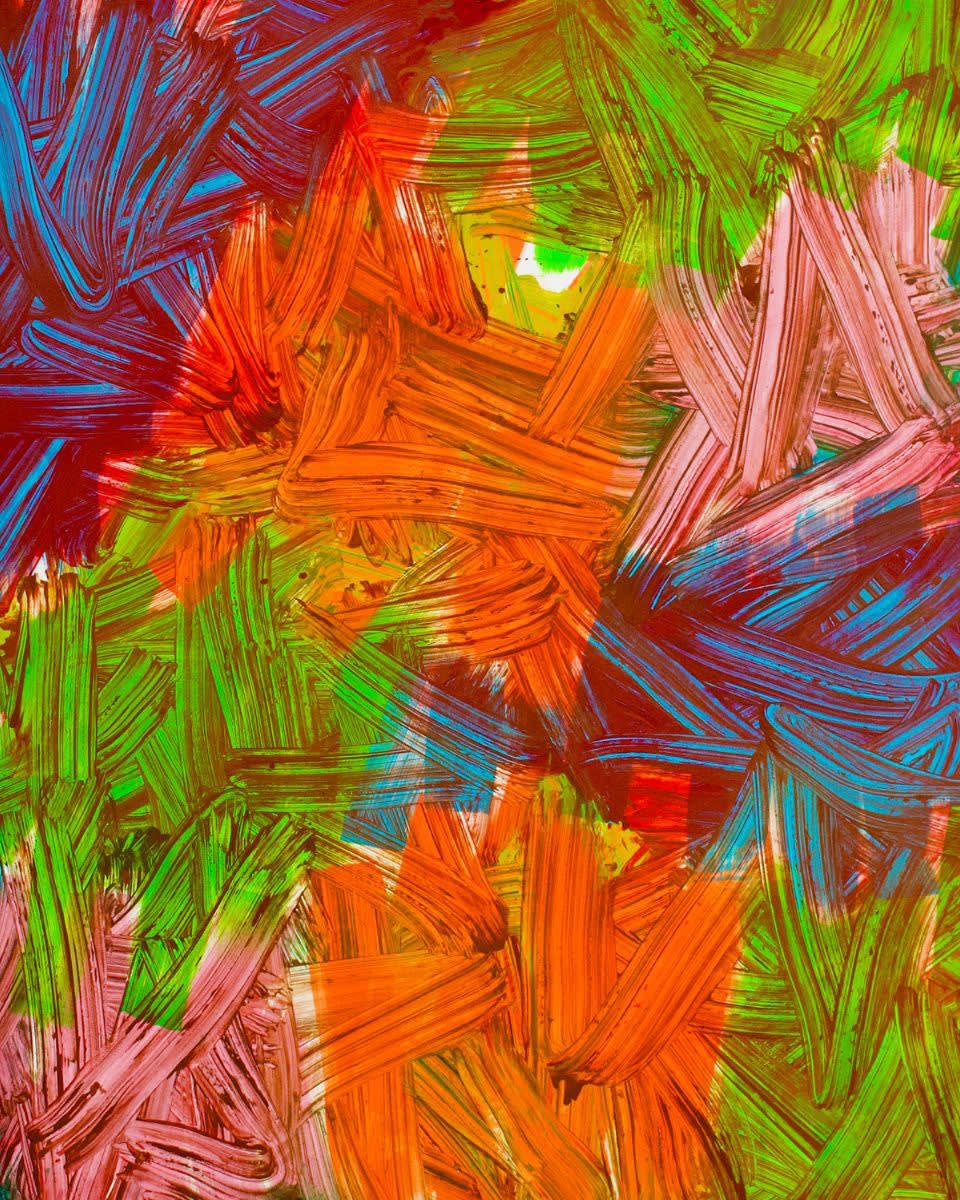To make a painting: Bernard Frize & Judy Millar
To make a painting focuses on the work of internationally renowned painter Bernard Frize, alongside Aotearoa’s distinguished painter Judy Millar.
Born in France and based in Berlin, Frize has a long history of work that examines the act of painting. He creates works in series, with self-imposing restrictions or protocols to follow for each body of work, which allow him to test and explore the outcomes of different decisions. "Painting as Frize conceives of the practice does not have as its ultimate goal the production of objects as much as the perfection (and the testing) of processes” writes Jean-Pierre Criqui in a review of Frize’s exhibition “Aplat” (Flat) at the Musée d'Art Moderne de Paris.1 Frize views the materials he employs – resin, paint, and brush – as collaborators to be worked with, as important as his own hand in the creation of a work.
This exhibition includes a selection of work from 2002-2019, which embody the structure and freedom paradoxically present in much of Frize’s practice. In Suret, 2015, the pull of Frize’s brush—which are often of his own construction—blend tones in a series of repeated actions. The slight variations in each pull speak to the artist’s manual approach but the overall effect is one of fluidity. The work is overlaid with a transparent resin which gives the actions a sense of being suspended in time. This combination also works to complicate an understanding of the process of creation, distancing the hand of the maker. In Romani, 2002, the horizontal voids are as important as the application of paint. There is a rhythm and tension as you move your eye across the surface of the work, mentally working to recreate the order of its construction. Frize uses process as a vehicle to explore ideas, to give them space to be seen and shared.
Juxtaposed with Frize’s work are two Untitled works by Millar, who shares her time between Anawhata, on the west coast of Tāmaki Makaurau, and Berlin. Millar similarly engages with the question of what painting is or can be. Physical and highly mediated, Millar’s work embraces embodied acts of making yet constantly looks to shift away from the self— towards open possibility. Like Frize, Millar is more interested in questions than answers. The process of erasure, of building up and wiping or scraping back is central to Millar’s practice, creating highly visible traces of her actions. Where Frize’s hand is often invisible, Millar’s fingertips dance and pull across the surface of the canvas. She questions, “how can I build a work that is both stripped away and full at the same time?”2 Untitled, 2004 and 2005 have a rich energy, with unexpected combinations of colour that pull between foreground and background.
Millar has exhibited extensively nationally and internationally for more than three decades. Recent solo exhibitions include Cry Sea, Cry Sky, Robert Heald Gallery, Wellington (2024); Questions I have Asked Myself, Galerie Mark Mueller, Zurich, Switzerland (2022); Action Movie, City Gallery, Wellington (2021); The Future and the Past Perfect, Kunstmuseum St Gallen, Switzerland (2019) and Rock Drop, Auckland Art Gallery Toi o Tāmaki (2017).In 2009 Millar was selected to represent New Zealand at the 53rd Venice Biennale.
Her work is held in collections including the Art Gallery of New South Wales, Sydney, Australia; Auckland Art Gallery Toi o Tāmaki, Auckland, New Zealand; CAP Collection, Dublin, Ireland ; Christchurch Art Gallery Te Puna o Waiwhetū, Christchurch, New Zealand; Chartwell Collection, New Zealand; Kunst Museum, St. Gallen, Switzerland; Museum of New Zealand Te Papa Tongarewa, Wellington, New Zealand and Tichy Ocean Foundation, Zürich, Switzerland.
Frize has exhibited internationally for over forty years. Selected solo exhibitions include: Centre Pompidou, Paris (2019); Fundação Calouste Gulbenkian, Lisbon (2015); Fondation Fernet-Branca (with Günter Umberg), Saint-Louis (2015); Museum Morsbroich, Leverkusen (2010); Kunsthallen Brandts, Odense (2007); Ikon Gallery, Birmingham (2003) and Musée d'art Moderne de la Ville de Paris (2003). Frize participated in the Venice Biennale in 1990 and 2005, in the Biennale of Sydney in 1998, and the Shanghai Biennale in 2000.
His work is held in museum collections including Tate Gallery, London, UK; Museum für Moderne Kunst, Frankfurt/Main; Kunstmuseum Basel; Kunsthaus Zürich, Zurich; Kunstmuseum Bonn; Museum Morsbroich, Leverkusen; Städtische Galerie im Lenbachhaus, Munich; Kunstmuseum Stuttgart; Centre Pompidou, Paris; Musée d’Art Moderne de Paris; Musée de Grenoble; National Museum of Art Osaka; Museo Reina Sofia, Madrid; and Museum of Contemporary Art, Los Angeles.
Frize was awarded the Fred-Thieler-Preis in 2011 and the Käthe-Kollwitz-Preis in 2015.
Judy Millar appears courtesy of Michael Lett Gallery
1. Artforum, November 2003, accessed online: https://www.artforum.com/events/bernard-frize-2-179660/
2. Judy Millar, Questions I have asked myself, 2021, p.50
















